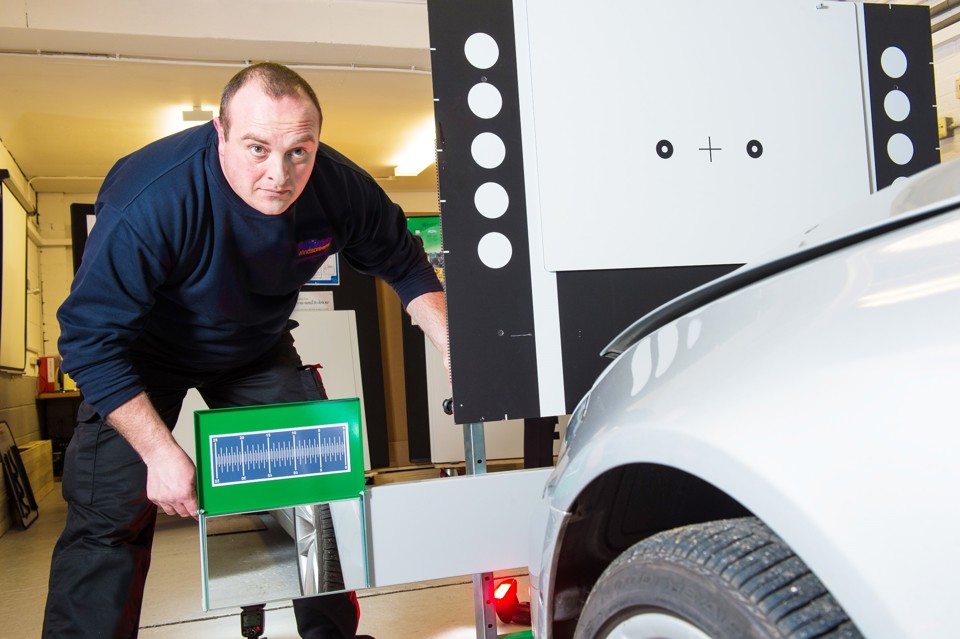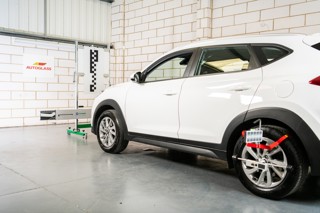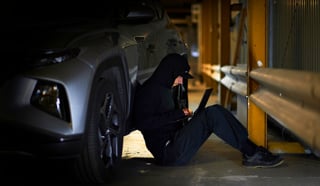Vehicle safety organisation Thatcham Research is urging the industry to collaborate to ensure the safe calibration of advanced driver assistance systems (ADAS).
Thatcham has issued interim advice and says it is working with vehicle manufacturers, insurers, and windscreen repair and replacement companies on a full code of practice, due to be published later this year.
The original 2016 code of practice focused on glass replacement and has now been superseded by the updated guidance, which includes a much more defined position for the industry as a whole.
Features such as autonomous emergency braking (AEB) and adaptive cruise control (ACC) rely on the accuracy of cameras and sensors fitted in a car or van. However, fleets have been receiving mixed messages as to how they should safely have vehicles recalibrated and the effectiveness of the parts they use.
Volvo, for example, has warned against using aftermarket variants for windscreen replacement that do not meet its stringent specifications (fleetnews.co.uk, December 5, 2018).
It wants windscreens replaced by a Volvo-trained technician, using Volvo methods, and all the necessary components and systems.
However, Autoglass commissioned the Transport Research Laboratory to investigate differences in the ADAS calibration outcomes for Volvo vehicles using OEM or OEM-equivalent windscreens (fleetnews.co.uk, December 18, 2018).
Researchers concluded there were “no material differences”.
Safety experts at Thatcham have attempted to add some clarity. They say if ADAS sensors, or parts that are in proximity to ADAS sensors, are included in a repair specification, calibration “must be performed” to vehicle manufacturer tolerances.
Richard Billyeald, chief technical officer at Thatcham, told Fleet News: “The whole industry, manufacturers included, needs to work together to enable the existing, healthy aftermarket to access the necessary information to satisfy this requirement.
“Core to this is the provision of ADAS fitment data and consistent advice around which repair scenarios will result in successful calibration.”
Thatcham says that investment in training is necessary to ensure competent technicians achieve complete system calibration in accordance with the relevant repair method, and can demonstrate successful recalibration.
Billyeald explained: “Proof of calibration via audited records is essential, providing peace of mind that all reasonable steps have been taken to reinstate the safety functions of a vehicle before it returns to the road.”
Autoglass, which has calibrated more than 600,000 vehicles, welcomed Thatcham’s intervention. It recalibrates vehicles in-house and says it recognises the need to follow specific manufacturers’ guidance.
Tim Camm, Autoglass technical training manager, said: “It is essential that ADAS technicians are equipped with the knowledge and expertise needed to recalibrate the sensors accurately. If the sensor is out by even a fraction, the driver would be relying on a faulty system, which can have catastrophic implications.”
Autoglass has also developed an industry-wide ADAS calibration accreditation with the IMI – the Institute of the Motor Industry – to help drive professionalism and ensure technicians have the necessary expertise.
Alastair Carlton, technical manager at National Windscreens, is a member of the steering group developing the code of practice. He told Fleet News: “This initiative recognises the leading role the aftermarket already plays in ADAS calibration along with the need for a review of vehicle repair methods used throughout the industry.
“It will also have a key role in raising awareness of the need for correct repair of this technology, not just in the automotive sector, but also with insurers, fleets and private motorists.”
Auto Windscreens only uses OEM windscreens on vehicles with ADAS and works exclusively with manufacturers for all recalibrations.
It has warned of the increasing number of vehicles with ADAS as an “accident waiting to happen” following windscreen replacement, due to a lack of regulation.
James MacBeth, Auto Windscreens operations director, said Thatcham’s new industry guidance is “vital” in advancing the vehicle repair industry’s approach to handling ADAS calibration.
“It promotes relationships between vehicle manufacturers, insurers and repairers and there is no doubt that clear guidelines are needed to ensure such safety-critical features are restored before vehicles are returned,” explained MacBeth.
“At Auto Windscreens, we firmly believe in the need for calibrations to be conducted in proper environments by trained technicians.”
More than 10% of vehicles – some four million cars – are fitted with AEB and, with a number of assistance systems set to become mandatory from 2021, the Association of British Insurers (ABI) says it will be even more important to have clear guidance on managing vehicle repairs involving them.
























Login to comment
Comments
No comments have been made yet.